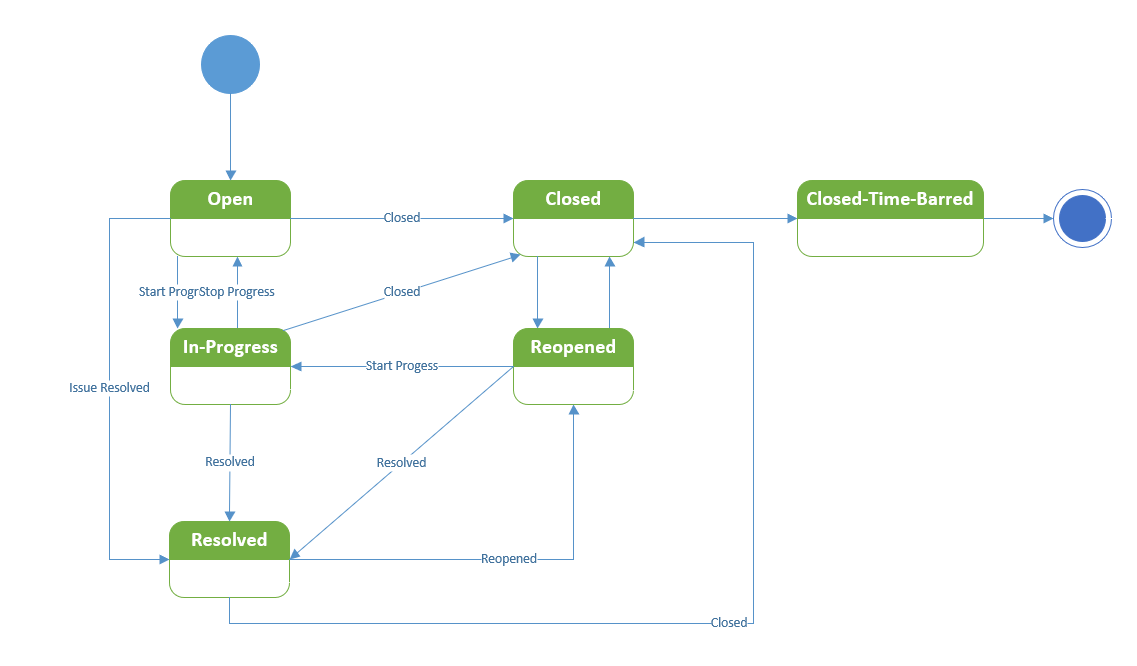- Story
- Bug
- Epic
- Task
- SubTask
(Note we can even create our own custom JIRA issues (then can be a standard issue or a Sub-task type) and include it in our project issue tracing scheme)
Here we understand various states of a JIRA issue and transition between the states. This exercise serves us two fold
It allows us to understand
- Various states a JIRA issue can take up and
- Understand UML state machine diagram as we have captured transition between JIRA issue states through the same
Open : Once the issue is created, the state assigned to it is Open. From here it can transit to other states. An Open issue can remain open if it is not worked upon. The Open issue transits to Resolved state if it is Resolved or an Open issue can transit to In Progress State it takes a certain time to work upon the issue and Resolve it. Open issues can even be Closed by the issue handling team.
Resolved: An issue can be Resolved by the team or the person working on it. An issue in Resolved Issue can be closed automatically after a pre-defined time period . A Resolved issue can be Re-opened as well.
In-Progress: When the team starts working on an Open issue it transits to the In-Progress state. If the work stops on this issue without Resolving or Closing it the state transits to Open again. In Progress issue after being taken up can be Closed or can be categorised as Resolved
ReOpened: A Re-Opened issue in JIRA can be put to Resolved, In-Progress or Closed states.
Closed: Issues in JIRA can be Closed or can transit to the Closed state from being Open or In-Progress or Resolved or Re-Opened States. A Closed Issue can be Re-Opened again in JIRA.
Now to prepare a state machine diagram the challenge is to define a permanent state , because only Permanent states connect to final Pseudo states. So say we define an additional state for the the sake of UML correctness. Let it be Closed – Time-Barred. Say an issue which is in the Closed state for specified time duration transits to Closed-Time-barred state and can not be Re-Opened.
The following will be the State-Machine diagram for this transition between the states.


 RSS Feed
RSS Feed